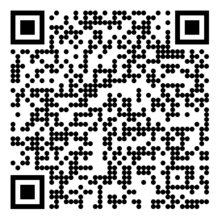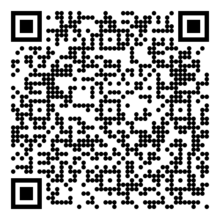LEARNER WORKBOOK
Observing Signs of Delirium in Individuals Living With Dementia
Overview: This interactive tabletop activity focuses on the identification of differences between dementia and acute delirium. It provides a dynamic learning experience that allows the learner to actively participate, improve their critical thinking skills, and practice communication using the STOP & WATCH and CUS communication tools through role-playing.
30-Minute Activity: Prebrief (4 minutes), Sorting Activity (6 minutes), Role-Play Activity (10 minutes), Debrief (10 minutes). Please feel free to use as much time as needed for the simulation.
Target Audience: Direct care workers and learners working in long-term care or dementia-care settings.
Learner Workbook
Objectives
Knowledge
- Distinguish between symptoms of delirium and dementia.
- Define delirium and dementia.
- Identify key characteristics of each condition.
- Differentiate between common symptoms of delirium and dementia.
Skills
- Effectively communicate client information using the STOP & WATCH and CUS tools.
Attitudes
- Demonstrate awareness of the importance of early identification and intervention for delirium.
- Demonstrate a commitment to clear and effective communication with healthcare colleagues.
Overview: Delirium & Dementia
Key Challenges
- Under-recognition: Delirium is often confused with and mistaken for dementia. This is due to:
Difficulty distinguishing between similar symptoms: while delirium and dementia have similar signs and symptoms, they have important differences including
onset, duration, course, and the person’s level of attention, alertness, and
consciousness.
- Course of the disease:
- Delirium can fluctuate across the day with varying severity and frequency of symptoms.
- Dementia is often seen as a gradual loss of abilities over time resulting in progressive changes in personality, behavior, emotion, and function.
- Understanding the causes:
- Delirium is caused by underlying physical illnesses like infections, medication side effects, pain, and low oxygen levels.
- Dementia is caused by permanent brain changes.
Why Understanding the Difference Matters
- Delirium is reversible if treated. If not, it can cause permanent loss of ability that robs the person of being able to do daily care routines and activities that add meaning to their life.
- Dementia is irreversible. However, there are effective ways to maintain quality of life of a person living with dementia.
IMPORTANT: You may hear other terms used as alternatives to Delirium in daily practice (i.e. Confusion). Confusion and Delirium should not be used interchangeably. It is important to reinforce the use of Delirium with your healthcare team as the standard practice to promote clear communication of the individual’s condition.
How Direct Care Workers Can Help
- Be an Observant Detective by asking yourself:
- Is the person more confused today than usual? Observe whether their behaviors have changed from their baseline.
- What might the behaviors mean? Is the person trying to communicate with you? Check to see if something might be triggering the behavior, like hunger, pain, lack of privacy, or boredom.
- What changes do you see? Make sure your report is specific. Remember, acute confusion fluctuates throughout the day.
- Are there signs of another illness? Talk with your healthcare team and report your concerns about any underlying illnesses.
- Is there something you can do differently to address the person’s needs?
If delirium is detected:
- First and foremost, ensure safety. One of the most important roles of direct care workers is to assure safety for persons who have delirium.
- Report behaviors to your healthcare team and supervisor.
- Promote safe mobility.
- Reorient the person to time and place using clocks and calendars.
- Encourage and assist fluid intake.
- Gently reassure the person if they are fearful or anxious.
- Promote sensory input: increase lighting and encourage the use of the person’s
eyeglasses and hearing aids.
- If the person is living with dementia:
- Consider how dementia affects communication and behavior.
- Focus on being person-centered.
- Use Validation Therapy to acknowledge the feelings expressed by the resident without agreeing with them
- “Listen” to behavior and adjust your approach to help the person meet their needs and be more comfortable.
- If an issue arises, work with your team to share information and problem-solve together.
Key Takeaways
- Direct care workers’ oversight of daily routines and care helps the person stay safe,
comfortable, and as functional as possible.
- Direct care workers are vital in observing and distinguishing the signs and symptoms of delirium and dementia.
- Delirium is reversible if treated promptly. Dementia is not reversible, but there are ways to promote quality of life in people living with dementia.
Let's move on to the simulation, where you'll practice putting these principles into action!
Symptom Sorting Activity: Delirium vs Dementia
In this 6-minute activity, we will sharpen our skills in identifying the symptoms of dementia and delirium. Once you identify these symptoms for each condition, they will be the key to the next step of this activity.
Step One: Getting Sorting! (4 minutes):
- You and your partner will receive a list of symptoms.
- Take a moment to review the list together.
- Once you feel comfortable, sort the symptoms into two categories:
- Delirium: Symptoms that might indicate delirium, a sudden change in mental state.
- Dementia: Symptoms that might indicate dementia, a gradual chronic decline in cognitive function.
Step Two: Review and Discussion (2 minutes):
- Come together as a group to review the sorted symptoms.
- Discuss the rationale behind each category placement.
- Feel free to ask questions if anything is unclear.
We have this activity available in two versions, which can be accessed using the buttons below. Your facilitator will instruct you on which version to use.
Version 1 | Version 2 |
|---|---|
HELPFUL TIP!
- Focus on the characteristics of each condition:
- Delirium often has a sudden onset and can fluctuate throughout the day.
- Dementia typically progresses gradually over time.
- Think about the impact on the person’s mental state:
- Does the symptom suggest confusion, disorientation, or changes in behavior?
Communication Tools (CUS, STOP & WATCH)
CUS Communication Tool

CUS is a communication tool designed to empower providers, caregivers, and patients to point out problems or conflict of information without challenging the other person’s authority or coming off as a personal attack. Use CUS as an escalation, and say the key words in the acronym: start by stating that you are concerned. If that doesn't work, say that you are uncomfortable. Finally, underscore that this is a safety issue and you need to stop the line.
To use CUS, proceed as follows:
- C: First, state your concern.
- U: Then, state why you are uncomfortable.
- S: If the conflict is not resolved, state that there is a safety issue. Discuss in what way the concern is related to safety. If the safety issue is not acknowledged, a supervisor should be notified.
https://www.ahrq.gov/teamstepps-program/curriculum/mutual/tools/cus.html
STOP & WATCH Tool

An early warning communication tool that can be used to alert a nurse if a change in condition is identified while caring for or observing a resident. This tool was designed to prevent unnecessary hospital transfers by promoting communication with other team members and patient safety.
https://www.in.gov/health/files/INTERACT_Stop_and_Watch_Early_Warning_Tool.pdf
Role-Play Activity
Reporting Delirium Signs using the STOP & WATCH and CUS Communication Tools
This role-playing activity involves two rounds. Remain in pairs. Identify who will be Learner 1 (Direct Care Worker), and who will be Learner 2 (Nurse). You will have 10 minutes to complete this activity.
- Briefly review the STOP & WATCH and CUS communication tools, highlighting their purpose and key elements.
- Instruct participants to each select three delirium symptoms from the Delirium vs Dementia Sorting Activity
- Taking turns, role-play the following scenario:
- Learner 1 (Direct Care Worker): You are concerned about a resident exhibiting signs of delirium. Use the STOP & WATCH tool to mentally assess the resident's changes, and then approach Learner 2 (Nurse) to report your observations.
- Learner 2 (Nurse): Listen attentively to the report on the resident. Encourage the direct care worker to utilize the CUS communication tool (Situation, Background, Assessment, Recommendation) for clear and concise reporting. Ask clarifying questions as needed.
- After the role-play, switch roles. Learner 2 becomes the Direct Care Worker, and Learner 1 becomes the Nurse. Repeat the role-play, with new delirium symptoms.